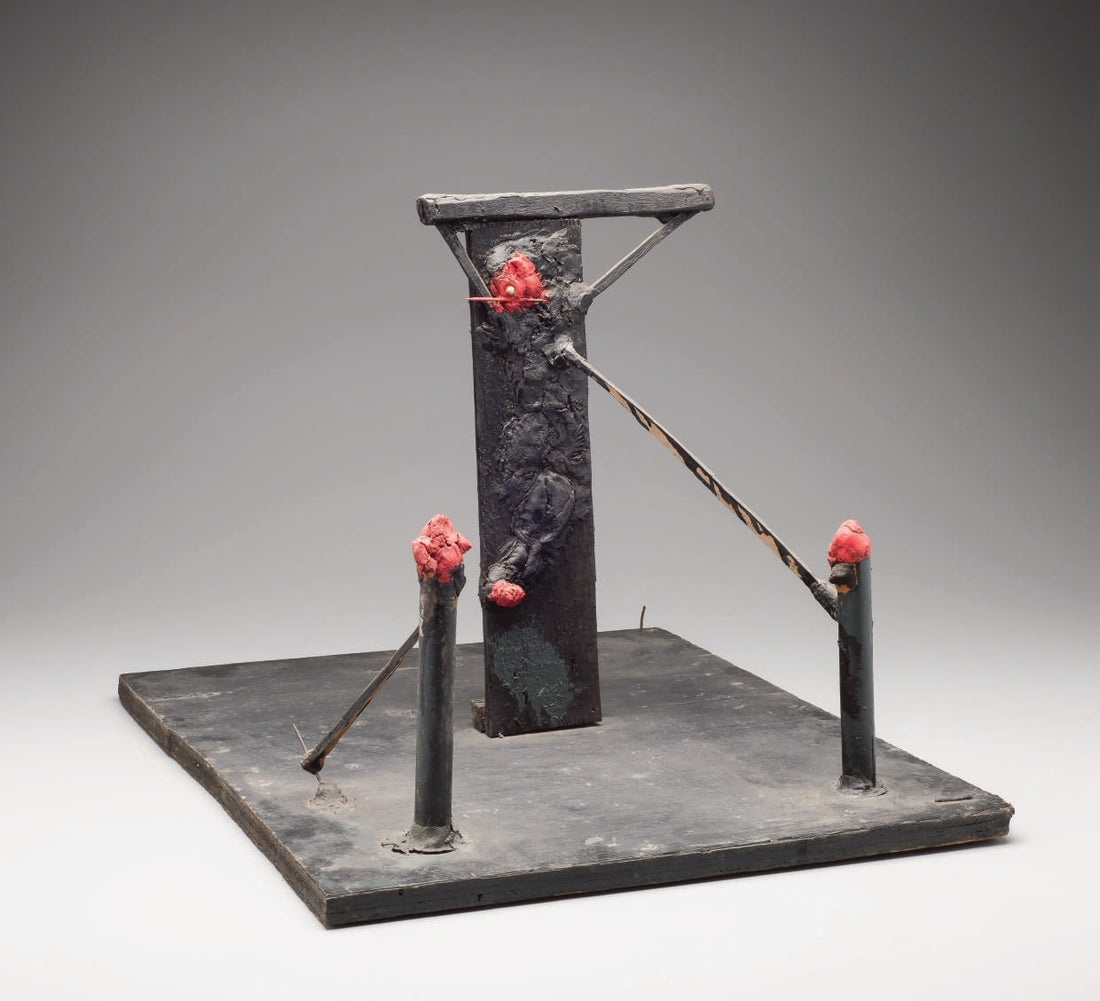First published: Summer 2023
For Dilmus Hall, art was a way to get his neighbours to pay attention to God, the devil and the world
Many people visited Dilmus Hall’s house in Athens, Georgia, because of a shoe. A devastating tornado on March 31, 1973, had torn through the southern town and tossed it into his yard. Perceiving it as something of a miracle since it was completely unscathed from its journey through the air on the destructive winds, Hall encased it in a display box. A local newspaper published his poem about the shoe that went “so high above / the many demolished buildings / someone dearly loved” and concluded with this invitation: “You may see this shoe at my home, hanging from a glass box, 1001 Dearing Street. Come and see for yourself. It is free for all to see.”

Drunkard’s Devil, 1960s, concrete, brick, metal, glass, enamel paint and mixed media, 38 x 72 x 32 in. / 96.5 x 183 x 81.5 cm
Those who came to witness the “Shoe that Road the Howling Tornado”, as a handwritten sign anointed it, found it was just part of an environment of objects created by Hall. Most were sculpted from concrete and represented parables of morality, tales of which Hall himself would expound upon to anyone who stopped to listen. As described in the book O, Appalachia: Artists of the Southern Mountains (1989) by Ramona and Millard Lampell with David Larkin, he was a man who had “the speaking style of a back-country revival preacher, the confidence of a riverboat gambler, a Charlie Chaplin walk, and forty-seven ways of expressing pleasure, from a chortle to a cascade of laughter.”

Adam and Eve with Snake and Apple, 1983–1984, paint, putty and wood, 10 x 10.5 x 12 in. / 25.5 x 27 x 30 cm
Born in 1900, Oconee County, Georgia, Hall had a passion for art from childhood when he would roll sap from the sweet gum trees with flour and sugar to form tiny animals. But there was little room for creative exploration in his large, tenant farming family where there was always work to be done. He said in interviews that his father was a former slave and that he grew up with scarce access to materials, only later able to afford chewing gum from the drugstore to use for sculpting.

Untitled (Seated Figure), 1983–1984, paint, putty, wood and tin on wood, 10.5 x 11 x 6 in. / 26.5 x 27 x 14 cm
During World War I, he served as a stretcher bearer in the US Army Medical Corps and saw architecture and art in Europe that inspired him to make something grander:
“I went in famous places ... and seen how they make these different things ... and, when I come back, then I put in practice that that I learned and, as I continued, I grew better, better and better,” he recalled in a 1985 video interview in the Georgia Folklore Collection at the University of Georgia Libraries. “I used to have out there [in his garden] a London Bridge; I crossed that London Bridge. ... The British people made it to cross that big river. I came back here and I had a whole lot of lumber and I made that bridge, so everybody looks at it and learns. That shows you that one person can wake up a thousand.”
By ALLISON C MEIER
This is an article extract; read the full article in Raw Vision #115.




